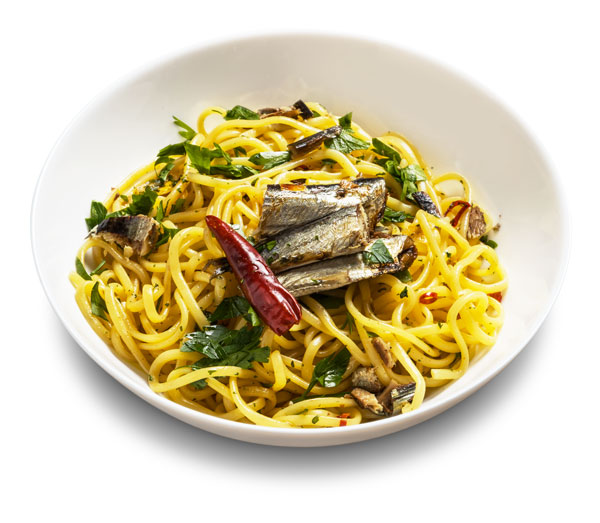The island of precious wheat
The ancient Sicilians believed it was the goddess Ceres who gave them wheat, which is cited in the Odyssey, and an illustrious botanist in the 1800s suggested it was produced and initially cultivated in Sicily.
At the beginning of the 1900s, Sicilian wheat, an authentic part of the agricultural heritage of the island could boast of more than 50 ancient varieties, the result of a rural history that stretches back over 9,000 years.
Amongst those cultivated today in Sicily, the Simeto stands out and ancient wheats including Timilia, defined by Goethe as the ‘beautiful wheat’, Senatore Cappelli, with very high yellow ears, and Russello, which has a reddish colour.
Sicilian wheat has an excellent protein content, and gives the pasta an unbeatable taste and flavour. The wheat roads in Sicily still bear witness to the memories and rites of the peasant tradition, and a religious care of Mother Earth that gives primacy to Sicilian durum wheat.

The Etna of wonders
The fertile plains at the foot of Mount Etna became a genuine granary thanks to the Greeks, so much so that the Romans baptised Sicily as the granary of the Empire.
Over the centuries, the Etnean territory was veined with agricultural traditions and has become a prolific product of excellence, thanks to a climate influenced by eruptions, winds and its rich lava soil which is high in minerals.
The list is endless, and ranges from the red orange of Sicily to the green pistachio of Bronte, from Monte Etna extra virgin olive oil to the prickly pears of Etna, not to omit pecorino and apples, lemons and Nerello Mascalese and Cappuccio grapes, which have all been given an Etna DOC.
The cult of pasta
The Sicilian soil is closely linked to the cult of pasta, if it is true that the first factory in Sicily dates back to 1100.
Once, pasta was prepared only to celebrate weddings and engagements, where there was plenty of maccaruna ‘i zito, also known as ziti.
Farmers used vegetables and their imagination to season it.
In Sambuca even to this day, it is seasoned with lemon and mint, in Buccheri with ‘l’amore di Dio’, only with peeled tomatoes and onions, and everywhere with the inevitable Sicilian meat sauce.
On the coasts, the fishermen cooked pasta cu’ pisci fuiùtu and pasta ‘ro malutempu, recipes that lamented the absence of fresh fish, such as pasta con le sarde a mare (sea sardines), which was cooked without sardines in the war years, and was seen as a luxury for only the few!
From the inventiveness of fishermen, minestra con le pietre was also created, which is a soup with fragments of rock that give it the scent and flavour of the sea, a dish that gave rise to ‘spaghetti allo scoglio’, the triumph of a Sicilian marriage between the sea and pasta.


